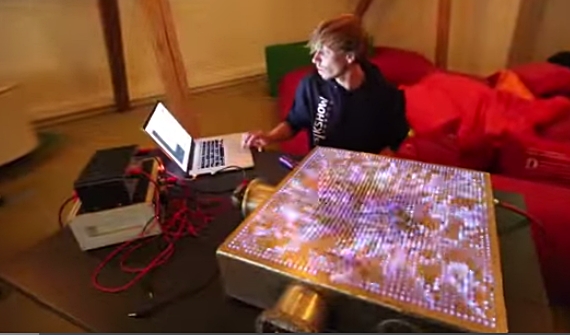German physicist Heinrich Rubens became a god among nerds in 1905 when he invented a tube that uses fire to visualize standing sound waves. When there is no sound fed into the tube, the flames rise to the same height. When a sound is added into the tube, the waveform actually affects the amount of gas that is fed through each hole.
At the point of maximum displacement on the wave (the anti-node), the gas pressure varies. The pressure is highest when the wave crests and the gas is pushed closer to the hole, which forces more fuel out and causes the flame to grow higher. When the wave pushes down into the trough, it can’t really suck the gas back in. The flame has enough gas and oxygen to remain burning higher until the wave crests at that point again.
The part of the wave which crosses the midline and remains unchanged is referred to as the node. This area in the Rubens tube doesn’t have the pressure fluctuation and remains relatively low.
Of course, volume plays a big role on how these flames appear. The above description applies when the volume is high, but if the incoming sound is quiet, the crest of the wave isn’t enough to overpower the opposite pressure of the trough, and the anti-nodes actually appear smaller than the nodes.
Derek Muller from Veritasium traveled to Denmark in order to check out an updated version of the Rubens tube. These physicists and chemists have developed an apparatus with 2,500 holes in the top. The key difference is that these holes are not all in a line like a traditional Rubens tube, but actually cover an entire plane.
The results are pretty amazing. Check it out:

